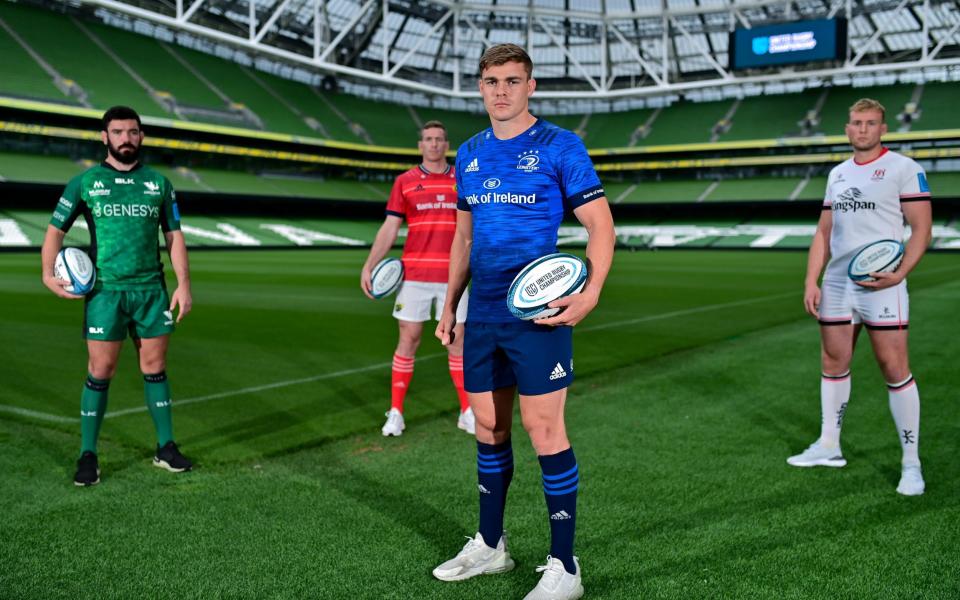Welcome to the United Rugby Championship: Fewer matches, full-strength teams and South Africa giants

The concept of ‘less is more’ is often touted in professional rugby union as a laudable aim, but one almost always ignored. And yet, while the focus on the glitzy launch of the United Rugby Championship on Friday night will undoubtedly focus on the addition of the four big South African franchises to the old Pro 14, arguably the most striking innovation is the bold decision to cut the number of fixtures to avoid any overlaps with Test matches.
It is something that Premiership clubs have lobbied for years but has always eluded them.
In the week when World Rugby introduced guidelines to restrict contact training to 15 minutes each week for professional clubs, the URC’s new format looks progressive not just for enhancing the competitiveness of the league but also from a player welfare point of view.
Despite the addition of the Sharks, Stormers, Lions and Bulls (who replace the Southern Kings and the Cheetahs), the clubs have been persuaded to cut three rounds from the previous competition, leaving just 18 regular-season fixtures and enabling the league to pause when international rugby takes centre stage.
“It all really started from the point - how do we make the best possible league that we can make from a format point of view?” Martin Anayi, the chief executive officer of the URC, told Telegraph Sport.
“Because everybody was saying to me - every single coach, every single player, every CEO - we need to play less rugby but no one was really doing anything about it. So we said our league is the one that's impacted most when international players go away.

“I had really good conversations with a few broadcasters and I said, 'Look, if we go down this route of playing slightly less matches, will you deem that to be more valuable?' And they said yes. So it kind of started from a point of everybody's talking about it, why don't we do something about it?”
To achieve this, the single 16-team league has been split into four regional pools of four (the two Scottish and Italian teams have been merged into one), with home and away fixtures. The remaining 12 rounds will alternate between home and away each season, split evenly.
The condensing of the league not only allows it to step out of the shadow of international rugby, but also attempts to address the long-standing problem of leading sides like Leinster able to rest their top players during the season, bringing them back for the Heineken Champions Cup.
The introduction of the South Africa sides, who can qualify for Europe’s top tournament at the end of this season, will also force clubs to field stronger sides through the season. Only one from each regional pool will qualify, followed by the next highest four finishers in the league.
Anayi was helped by the fact that the competition, unlike the Premiership and Top 14, is less bound by history and/or competing interests with their respective governing bodies, which made change and experimentation more possible.
“There was quite a lot of convincing to do because teams in our league still make money per game,” added Anayi. “So we had to sell the vision of something being more valuable for fewer games. And then by bringing the South African teams in, we felt like they had equality into the top end of the tournament.”
It remains to be seen whether the league can overcome the logistical challenges of playing home and away in South Africa. All four franchises have been isolating for five days and undergone PCR testing in Italy and the Republic of Ireland ahead of their matches this weekend, with the Lions featuring in the opening fixture against Zebre on Friday night. The glamour fixtures see the Bulls and the Sharks face Leinster and Munster respectively on Saturday night. After a further five days they will then be able to play matches in the UK. If South Africa remains on the UK’s red list into the season, it is understood the SARU has given its consent for any home matches to be played in Europe to ensure the league is not disrupted.
What is certain, though, is that South Africa’s main franchises will bring a new and welcome stardust to the tournament, especially once their Springbok players are released back to their clubs following the autumn internationals.
The prospect of seeing the likes of Siya Kolisi go head-to-head with Alun Wyn Jones again is likely to draw an audience in England as well as the Celtic countries. The South African broadcasting market is also a lucrative one, while the likes of the Sharks are now backed by ambitious investors and the marketing prowess of Roc Nation, one of the world’s leading marketing companies - set up by American rapper Jay-Z.
Plans are already being considered to play matches in the US if the Covid restrictions allow, while market research suggests there is a healthy appetite for supporters from the Celtic clubs to travel to South Africa as a destination trip, given the pent-up demand following the ban on supporters for the Lions tour.
Exposure for the tournament has also been addressed, with a mix of live terrestrial coverage and pay-TV.
Anayi hopes the changes will future proof the league and ensure it goes someway to closing the commercial gap with their English and French counterparts.
“When the LNR (the French league) does a €112 million broadcasting deal, there is quite a long way to go for parity so we have to be realistic. We feel like we just need to work harder and harder to allow the clubs to earn more money to be successful. I don't think they necessarily need financial parity, they just need to close that gap. And that's our aim is to help them close the gap.”

 Yahoo Sport
Yahoo Sport 





































